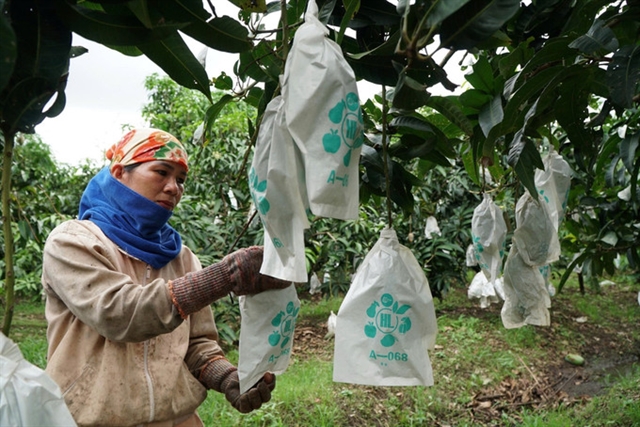 Society
Society

 |
| Mango farmers in Đắk Nông Province's Đắk Mil District face a devastating harvest as prices hit record lows. Photo dantocmiennui.vn |
ĐẮK NÔNG — Hundreds of mango-growing households in Đắk Gằn Commune, Đắk Mil District, Đắk Nông Province are facing severe losses this harvest season as mango prices have plunged to a record low, leaving tonnes of fruit unsold in orchards.
According to the Đắk Gằn Commune Farmers’ Association, some mango varieties remain unharvested with hundreds of tonnes still on trees, as traders have either offered unreasonably low prices or declined to purchase them altogether.
Farmer Nông Văn Lộc from Cao Lạng Hamlet, Đắk Gằn Commune, owns more than one hectare of mangoes that are currently in their peak harvest season.
In late May 2025, Lộc harvested the first batch of about three tonnes, selling them for VNĐ7,000 per kilogram (US$0.27).
Despite this already being a relatively low price compared to recent years, he was shocked to find that prices dropped even further during the main harvest.
Currently, traders are offering only around VNĐ2,000 per kilogram ($0.08) for the remaining 7–8 tonnes of fruit in his orchard.
“Mango prices have always fluctuated, but I have never seen them this low,” Lộc said.
“In previous years, we could sell mangoes at an average of VNĐ15,000 per kg ($0.59). Even in poor seasons, we still got VNĐ7,000–8,000 per kg ($0.27–0.31). At VNĐ2,000 per kg, the revenue barely covers the cost of the fruit wrapping bags.”
Similarly, Vi Văn Đạt, another farmer from the same hamlet, owns two hectares of mangoes with this year's estimated output exceeding 40 tonnes. Đạt grows both green- and red-skinned Taiwanese mangoes. However, while traders are offering a mere VNĐ2,000 per kg for the green variety, they are outright refusing to buy the red variety, citing a lack of market demand.
“This is the lowest price we’ve ever seen,” Đạt said. “At this rate, our income from mangoes won’t even cover the investment costs.” He noted that fertiliser, pesticides, and labour costs have all risen sharply this year.
“Our family spent around VNĐ70 million ($2,755) to cultivate two hectares of mangoes — not including our own labour. At best, we’ll break even. More likely, we’ll lose money.”
According to Hoàng Đức Lâm, chairman of the Đắk Gằn Commune Farmers’ Association, the local climate and soil conditions are most suitable for fruit cultivation.
With low rainfall and high average temperatures, the region is ideal for mango farming. Currently, Đắk Gằn Commune has more than 1,000 hectares of mangoes, with an annual output estimated at over 20,000 tonnes.
In previous years, favourable yields, stable quality, and decent market prices helped farmers earn profits of around VNĐ100 million per hectare ($3,940). But this year, most households are expected to suffer heavy losses.
Notably, there are still some 500–700 tonnes of unsold red-skinned Taiwanese mangoes in the commune, despite farmers’ efforts to reach out to agents and traders.
The price crisis is not limited to Đắk Gằn. Farmers across other areas of Đắk Mil, Cư Jút, and Krông Nô districts are also struggling.
In many orchards, especially in remote areas with poor road access, ripe mangoes are falling to the ground unharvested, as the cost of picking and transport exceeds the sale value.
“Some families have simply left the fruit on the ground,” one local farmer said. “Even if we harvest it, the revenue just barely covers the labour cost.”
Over the past few years, many farmers in Đắk Nông have switched from long-term industrial crops or short-term crops to fruit trees.
However, as seen previously with avocados — where plummeting prices forced some growers to use the fruit as livestock feed — the lack of a sustainable consumption strategy has proven risky.
Agricultural experts and local authorities are now calling for more strategic planning to avoid the boom-and-bust cycle caused by spontaneous crop conversions.
“Farmers, cooperatives, and government agencies need to collaborate to build long-term, sustainable value chains for fruit products,” said a local agricultural official. “Otherwise, even the best-growing regions will continue to face severe market challenges.” — VNS




